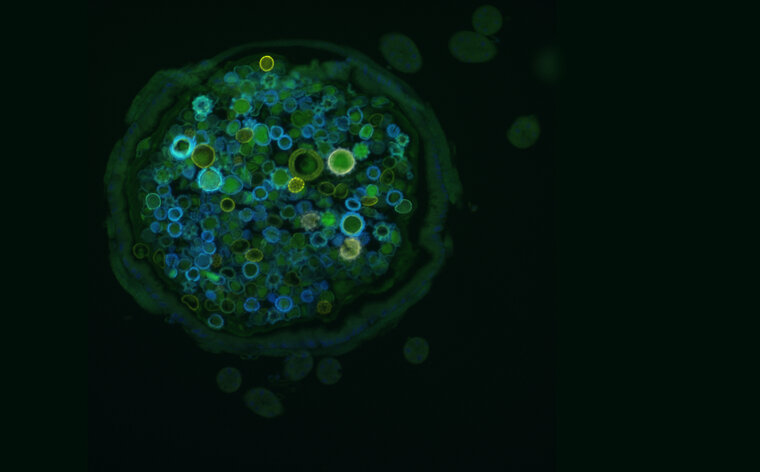
Third Place, 2019
Wild-caught bumblebees have a core set of bacteria within their digestive tract that is passed between adult bees and helps protect against insecticides and pathogens. Postdoctoral researcher Tobin Hammer lab-reared common eastern bumblebees in a “germ-free” environment, making their guts void of bacteria. Lexie Martin performed a technique known as fluorescence in situ hybridization on one of these “germ-free” bumblebees in order to assess the contents of its gut. Within the image, one can see a cross-section of the bumblebee’s digestive tract filled with spiked freshly-eaten pollen granules and smooth discs of partially digested pollen granules. Additionally, the blue dots along the gut wall are nuclei of the gut cells.
Credit:
Lexie Martin
Ecology, Evolution, and Behavior Undergraduate Student




